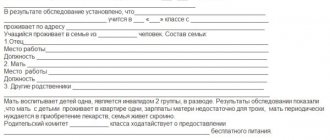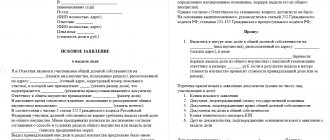Concept of systematization
The system of existing regulations in a modern civilized state is very complex due to both the significant number of bodies adopting such acts and the multiplicity of acts issued by law-making bodies. In addition, the regulatory system is subject to rapid change. A newly adopted law, presidential act or other source of law often makes adjustments to existing acts. Some of them are supplemented with new regulations, others are changed, and others are declared invalid in whole or in part.
In order to quickly find the necessary norms in the mass of existing and changing sources of Russian law, government bodies, enterprises, and even workers dealing with normative acts are forced to constantly engage in work to bring them into an orderly set, a system. This kind of activity is covered by the concept of systematization of normative acts.
Systematization is primarily used as an effective way to provide legal entities with the necessary regulatory information. Systematization is also widely used in the process of lawmaking.
Modern legal practice knows and uses four ways to systematize normative acts: collection by state bodies and legal entities of normative acts necessary for their activities; publication of various collections of laws and other regulations; combining a set of small acts issued on one or several interrelated issues into one enlarged act; the creation of a new act - a code or another act that approaches the code in its legal qualities - by revising existing rules of law, as well as supplementing them with new normative provisions.
In accordance with the named methods of systematization of normative acts, four types are distinguished: accounting, incorporation, consolidation and codification.
Accounting for regulations
As a type of systematization, accounting of legislation and other regulations is the activity of collecting, storing and maintaining them in a controlled state, as well as creating a search system that ensures that the necessary legal information is found in the array of acts registered.
Accounting is carried out by almost all government bodies and legal entities to satisfy their own needs for legal information or for commercial purposes, to provide legal information to other entities.
The main task of accounting is to collect and maintain regulations in a state that allows you to quickly find the necessary legal information. Typically, government agencies and legal entities need knowledge of current regulations on a particular topic. But situations are quite possible when information is required only about the official details of normative acts (their name, date of adoption, act number, etc.) or the texts of acts that have lost force.
Taking into account their own information needs, government bodies and legal entities collect laws of the Russian Federation, acts of the President of Russia, government decrees, regulations of ministries and departments of the Russian Federation and other acts.
The collection of acts subject to accounting is carried out in various ways. A significant part of them can be obtained from officially published collections of normative acts.
The totality of normative acts taken into account constitutes an information fund in which normative acts are stored in a certain order. The fund, consisting of several hundred or thousand acts, is divided into sections, as a rule, by law-making bodies. Within the section, acts are placed in chronological order.
In order to know which normative acts are in force, what changes and additions have been made to them, information about all their subsequent changes and additions is entered into the texts of the acts taken into account, in other words, they are maintained in a control state.
To quickly find a legal regulation adopted on a particular issue (topic), information retrieval systems are created. They can be created without any modern technology, with manual search. The development process of such a system includes the following stages:
a) determination of a set of thematic issues on which the search and provision of the necessary information should be carried out. The list of such questions is recorded in a special document (alphabetical subject dictionary or rubricator of branches of legislation). In an alphabetical subject dictionary, thematic issues are designated by individual terms or combinations of terms, which are arranged in alphabetical order (for example, “Advance payment. Automobile transport. Author's agreement”, etc.). The rubricator of branches of legislation is built on a different principle: thematic issues are formulated in it in the form of a list of branches, institutions and other parts into which the legislative system is divided;
b) analysis of regulatory acts received for registration in order to identify thematic issues in them, provided for by the alphabetical subject dictionary or rubricator of branches of legislation;
c) recording the thematic issues identified in the acts in a special journal or on cards. Journal accounting has very limited capabilities. Its use is advisable where there is a small array of regulations, and the range of information needs of an organization or institution is constant within a fairly narrow topic. When creating a card index, the details of the act are recorded in special cards (name of the body that adopted the act, type, number of the act, etc.), and sometimes the text of the act is also placed. Completed cards are placed into categories in accordance with the vocabulary or rubricator used in the system.
The search is carried out as follows:
- the emerging need for legal information is formulated in the form of a request on what topic or what specific acts should be found;
- using an alphabetical subject dictionary or a rubricator of branches of legislation, a list of topics that correspond to the received request is determined;
- By sections of the journal or headings of the card index, regulations are identified that contain norms that correspond to the topic of the request; By reading the texts of acts, the selection of norms that correspond to the request is carried out.
At present, when modern technology, including high-performance computers, is increasingly used in the field of management, great opportunities are opening up for the creation of automated information retrieval systems. In contrast to manual search systems, automated search systems can significantly improve the search for legal information and ensure the most complete satisfaction of the needs of government agencies and legal entities.
According to the legislation, automated information retrieval systems are characterized by: a large information fund, consisting of several thousand and tens of thousands of regulations; high search speed; a qualitatively different, more progressive way of processing regulations, allowing you to search on any topic. If in systems with manual information search the search is limited to a set of those questions that are reflected in the vocabulary or rubricator of the system, then in an automated system this limitation is removed.
In government agencies, a special service called a codification bureau, consisting of one or more people, is usually involved in recording and searching for regulatory information. Due to the fact that for an individual organization such accounting is quite labor-intensive, complex and fraught with many errors during the search, various types of commercial organizations are created that centrally collect and maintain in a controlled state the regulations of the federal government bodies of the Russian Federation and provide interested parties with the necessary them with legal information.
Since May 1992, state registration of departmental regulations has been introduced in the Russian Federation. Regulatory acts of ministries and departments of the Russian Federation that affect the rights, freedoms and legitimate interests of citizens or are of an interdepartmental nature, regardless of their validity period and the nature of the information contained in them, are subject to state registration with the Ministry of Justice. Based on the normative act submitted for state registration, a legal analysis of its compliance with the legislation of the Russian Federation is carried out.
Currently, the State Legal Administration of the President of the Russian Federation is creating a unified reference data bank of legal information, which includes, along with acts of federal bodies of the legislative and executive branches of government, normative acts of all subjects of the Federation.
Concept and types of incorporation
Systematization of normative legal acts in the form of incorporation is expressed in the preparation and publication of various kinds of collections (collections) of such acts. In contrast to accounting carried out by government bodies and legal entities for their own needs, incorporation is carried out with the aim of providing the widest range of subjects with the texts of laws and other regulatory legal acts.
The incorporation of normative legal acts is directly related to their accounting, since it is based on a certain, maximally complete fund of relevant acts and a search system that can ensure the finding of all necessary acts, since the first task of incorporation is to prepare a list of acts that should comprise the prepared collection. Thus, when publishing a collection of laws on individual branches of law, it is necessary to identify all legislative acts within the scope of the relevant branch. In the case of preparing a collection of acts adopted by one or more law-making bodies, the normative acts adopted by them for the entire period of their activity or for a certain period of time are subject to selection. Regulatory acts can be incorporated in the form in which they were adopted by the law-making body.
A similar principle of placing acts in a collection is applied in cases where the act consists only of normative instructions and has not undergone changes or additions in the process of action, or when preparing historical sources of law. In collections of current normative legal acts, their texts are usually published not in the edition in which they were originally adopted by the law-making body, but taking into account subsequent changes and additions. In the process of action, a normative legal act, as a rule, undergoes certain changes and additions: part of its regulations loses force, the act is supplemented with new normative regulations, or any adjustments are made to its original norms. Therefore, it is inappropriate to include a normative act in the collection in its original form, without reflecting its subsequent changes and additions. Such an act will be inconvenient to use. In order to establish a norm that should be followed in a given case, it will be necessary to review each time the entire set of acts that complement and change it.
Therefore, before placing a normative act in the collection, it is necessary to process it:
- remove from the text individual articles, clauses, paragraphs that have lost force, and, conversely, include all subsequent changes and additions indicating the details of the acts that made such changes or additions;
- exclude from the act those parts of it that do not contain regulatory requirements, making notes about the reasons for the absence of such parts in the text;
- remove information about the persons who signed the normative act.
Such external processing of normative acts does not affect their normative content. The rules of law themselves do not undergo any changes and are incorporated in the form in which they are in force at the time of systematization. At the same time, the details of regulatory acts, numbering of clauses, paragraphs, etc. are completely preserved.
It is this feature - maintaining the normative content of the act unchanged - that constitutes the main difference between incorporation and consolidation and codification as more advanced types of systematization. The results of incorporation can be expressed in the publication of a collection of laws, other regulations, a collection of legislation or a code of laws.
Collections are called incorporated publications of laws or other normative legal acts adopted by one or more law-making bodies, as well as thematic publications of laws and other normative acts. For example, a collection of legislative acts on labor may consist of laws of the Russian Federation, decrees of the President, decrees of the Government of the Russian Federation.
Collections of normative acts can be prepared and published both by the law-making body itself and by state, commercial publishing houses, and legal institutions. A collection of normative acts prepared by a law-making body has the status of a source of official publication, and such a collection can be referred to when resolving disputes and other legal issues.
Meetings are usually called incorporated publications of normative acts of the highest bodies of legislative and executive power of the country. For example, the first Complete Collection of Laws in Russia, published in 1830, consisted of legislative acts emanating from the tsar, normative acts adopted by the highest bodies of subordinate government - the Senate, ministries, as well as the Holy Governing Synod. All 30,920 normative acts included in the Assembly were placed in chronological order. A fairly comprehensive alphabetical and subject index was provided for the Meeting, allowing for thematic search of legal information.
Collections of all-Union and republican legislation were published several times in Soviet times. The most fundamental of them was the fifty-volume Collection of the current legislation of the USSR, the publication of which was completed in 1977. The Collection included all current legislative acts and regulatory decisions of the Government of the USSR adopted since the formation of the USSR. In terms of the way the material is arranged, the Collection is classified as a systematic incorporative publication. The normative acts included in it were distributed into thirty-two sections - branches of legislation.
A fairly wide range of bodies, organizations, and institutions can take part in the preparation and publication of meetings. Depending on who carried out the incorporation of legislation, the legal literature distinguishes three types of meetings: official, official (semi-official) and unofficial.
A meeting is recognized as official in two cases: when the law-making body itself prepared and published it, or approved or otherwise officially approved the meeting prepared by another body.
Official meetings are those that are prepared on behalf of a law-making body, but are published without its officially expressed approval or approval. The absence of such approval means that responsibility for the completeness of the collection and the compliance of the texts of acts with their official text rests with the compiler of the collection, for example the Ministry of Justice, and not with the law-making body.
Unofficial collections include those collections of legislation that are published by scientific institutions and publishing houses on their own initiative, without special powers from law-making bodies.
Official collections of legislation are, accordingly, sources of official publication, while official and unofficial ones are considered only as an ordinary publication, the text of which cannot be referred to when contacting law enforcement and other state bodies.
Collections of legislation may be systematic and chronological. In systematic collections, acts are arranged according to subject matter, depending on their content; in chronological collections, acts are arranged sequentially, depending on the date (time) of publication of the acts. Chronological collections are inferior to systematic collections, which are more convenient for using normative material and more effective from the point of view of the prospects for systematization of legislation. In addition, collections of legislation can be complete, including all existing acts (of a certain level or type), and partial, including only a part, a certain array of acts.
A type of collection of legislation is a code of laws - an incorporated publication of normative acts of the highest bodies of the legislative and executive branches of government. The acts included in the code are, as a rule, systematized according to the subject principle, that is, according to branches and institutions of legislation.
A code differs from a collection in three ways: a code is a source of official publication of normative acts, since it is published on behalf and on behalf of law-making bodies, with subsequent approval of the prepared publication as a whole or each of its volumes separately. In this case, the code has priority over all earlier official publications of normative acts, since it contains their current version. In cases of discrepancies between the texts of normative acts published in the code and other, earlier editions, its edition published in the code is recognized as authentic to the official text of the act;
The preparation of the code is always accompanied by a lot of legislative work. During the period of its compilation, outdated and actually ineffective regulations are identified and declared invalid. The plurality of acts adopted on the same issue is eliminated by preparing a new enlarged act. Existing gaps in legislation are overcome by the adoption of new laws and other regulations;
the code is a collection of all current legislation without any exceptions. Even M. Speransky recognized that a code can only be “the general composition of laws and embrace all parts of the legislation in their entirety.”
The first Code of Laws in Russia was prepared and published in 1832 and consisted of fifteen volumes. It included about 36 thousand normative acts and extracts from them. The normative material in the code was arranged according to the subject principle and was divided into eight main sections. But the actual division of normative acts was carried out according to volumes. Within the volume, a single numbering of articles was used, under which either a normative act or extracts from it were placed.
The preparation of the code was carried out on the basis of the Complete Collection of Laws. Only existing regulations were selected. At the same time, both external and substantive processing of the acts was carried out: repetitions, non-normative, casuistic provisions were eliminated from them, and “too extensive and verbose” laws were stated in a new, abbreviated version.
The latest set of Russian laws - the Code of Laws of the RSFSR - was published in 1986-1988. and consisted of eight volumes of current legislative acts and the most important decrees of the Government of the Russian Federation of a general normative nature. In the Code, normative acts were systematized by subject and grouped in five sections, which in turn were divided into chapters, paragraphs, clauses and subclauses.
The code was provided with chronological and alphabetical subject indexes. The main notability of the Code was that it was published on removable sheets, which made it possible to quickly replace the text of an act that had lost force or had undergone any other changes with the text of the act in a new edition.
Today, in the conditions of a kind of “boom” of legislative decisions, there is an urgent need to streamline and systematize Russian legislation. The task of preparing and publishing a new Code of Laws of the Russian Federation is very urgent. The preparatory work for the creation of the Code of Laws has essentially already begun. In accordance with Decree of the President of the Russian Federation dated February 6, 1995 No. 94 “On preparation for publication
Code of Laws of the Russian Federation" preparations are underway for the compilation and publication of the Code of Laws as an official systematized complete collection of current regulations of the Russian Federation.
To form the normative body of the Code of Laws, it is necessary, as the first stage of preparation for its publication, to carry out an inventory of all existing, formally not repealed normative acts of the Russian Federation, as well as normative acts of the USSR that continue to be in force on the territory of Russia. The result of this work should be a chronological collection of current regulations on machine-readable media. In addition, it is necessary to develop proposals on the principles of formation and structure of the Code.
External processing type
What is the external processing of existing legal acts? The following algorithm is appropriate here:
- Individual paragraphs, clauses and articles that are no longer valid are removed from the main content. At the same time, the material includes all subsequent ones immediately from the moment of formation of the act of change.
- There is an exclusion of parts whose content does not contain normative requirements.
- As a result of incorporation, a collection of legislation, a special collection of laws or another normative act is published.
It is interesting to note that a special type of collection of legislation today is a set of laws, which is:
- A collection of currently relevant legislation in its incorporated form, without any exceptions.
- Source of official publication.
- Incorporated publication of legal acts of higher state organizations (executive and legislative).
Consolidation of legislation
Accounting and incorporation of normative legal acts, limited to their external processing, do not solve all the problems that may arise in the process of systematizing normative and legal material. In particular, these methods cannot eliminate the multiplicity of regulations adopted at different times on one or more related issues.
The plurality of normative acts is overcome by combining them into one enlarged act. This method of systematization is called consolidation. The new enlarged act completely replaces the regulatory acts included in it, since it is newly adopted by the competent law-making body and has its own official details: name, date of adoption, number and signature of the official. In other words, consolidation is a type of law-making activity of government bodies.
Nevertheless, this is a kind of law-making technique. Its main feature is that during consolidation the content of the legal regulation of social relations does not change. All normative provisions of previously adopted acts are combined in the new act without changes. In the best case, their editorial editing is carried out: contradictions, repetitions, lengthiness are eliminated, normative instructions that are identical in content are combined into one paragraph, etc.
It is this feature of consolidation that has allowed some legal scholars to consider it as the most advanced type of incorporation. However, in our opinion, incorporation and consolidation are qualitatively different methods of systematizing normative acts.
Firstly, they relate to various aspects of the legal activity of the state. Incorporation is one of the methods of organizational and methodological activity of government bodies designed to ensure the implementation of the rules of law in specific relations. Consolidation is included in the arsenal of law-making methods.
Secondly, incorporation and consolidation differ in the range of subjects applying them. Incorporation is carried out not only and not so much by law-making bodies, but by other government bodies, scientific institutions and legal publishing houses, while consolidation can be used only by law-making bodies and only in relation to the normative acts adopted by them.
Thirdly, incorporation and consolidation differ in their final results. Incorporation comes down to the preparation of a collection of normative acts; the normative acts included in it do not lose their independent significance. During consolidation, the combined acts lose force, and a newly created normative act comes into force in their place.
Thus, consolidation is an independent type of systematization of regulatory legal acts.
Consolidation is quite widely used in law-making activities with the aim of streamlining regulations on taxation, administrative responsibility, in a word, wherever it is possible to bring together dozens or even hundreds of disparate regulations without changing their content. As is known, consolidation has become widespread in many foreign countries. In France, for example, the practice of issuing consolidated legislative acts, called codes, is widely used in certain fairly large areas of legal regulation - on labor, road, agricultural, tax, customs, etc.
Features of codification
Like the two categories presented above, codification is determined by individual characteristics, including the following points:
- Codification is the most complex in terms of structure, but at the same time it is the perfect form of such a category as systematization.
- In accordance with its essence, codification is a type of lawmaking, since the object of the procedure is nothing more than legal norms.
- Codification is carried out exclusively by competent authorities of national importance on the basis of powers of a constitutional or other nature at the legal level.
- Codification one way or another introduces a new nuance into the regulation of currently valid legal norms (in any case, it represents a “legal reform”). As a rule, this is associated with large-scale transformations of a social nature. Here one can see a clear difference between the category under consideration and incorporation, which is permanent in nature and occurs periodically. In addition, the results of incorporation are calculated over a long period.
- The result of codification is nothing more than a codification act, distinguished by logical and legal integrity, consolidated focus (unites normative requirements that have not lost their own meaning), complex structure and significant volume, a dominant role among other industry acts, as well as wide coverage in terms of social spheres of public life.








